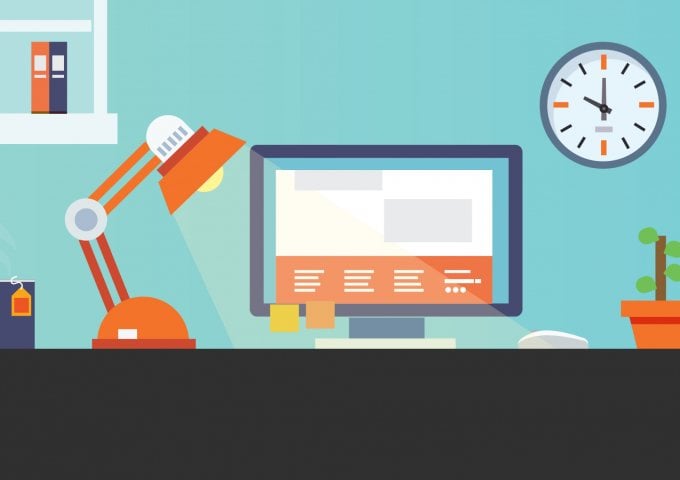A great footer for your online store? Get inspired!


The footer is an important part of your website, because it is displayed on each page. Needless to say, it deserves extra attention! Let me show you what the role of the footer is and give you some tips on what to include in it.
A footer… Why?
The footer is not there for decorative purposes. It has a clear role, mainly aimed at informing and assisting your visitors.
- Navigation: visitors who can’t find what they’re looking for or are trying to find a specific page, for example ‘About us’ or ‘Customer service’, often have a look at the footer.
- Provide information: Your visitors expect to find specific information in the footer, including your contact details and general terms & conditions.
- Convince your visitors: The footer often showcases quality labels, logos and reviews.
- SEO: Opinions differ here, but internal links in the footer are still often used for SEO.
- Branding: Use your house-style colors and (once again) include your logo and social-media buttons to boost visitors’ connection with your store.
Examples of great footers
No need to reinvent the wheel! Online you can find countless examples of great footers. Many major online stores have fully-fledged marketing teams that take charge of website development. Let’s have a look at their approach.
Zalando has never focused much on its website design. That is also reflected in its footer, which is by no means fancy, but it is functional. The page-wide footer features everything a footer should have: newsletter, logos, social-media buttons, language selection, quality labels and awards, and last but not least, many, many links.
That being said, the Zalando footer is not the best example to follow. Probably every department wanted to include something in the footer… And there’s a reason for that. Let me explain this information overload.
The marketing team specializing in search engine optimization surely represented its interests very well. Each category page has its own link and the text also includes the main keyword of each page. Why? To achieve a better Google ranking! In other words, this is a form of link building, but on Zalando’s very own website.
How to choose the right footer layout
Creating a footer is not rocket science. The MyOnlineStore layout tool allows you to create your footer in no time. All you need to do is decide what you’d like to include in your footer, which is definitely an important step.
Before we go any further, a brief overview of items that are generally included in footers:
- Links to your website pages
- SEO links (mainly to achieve a better Google ranking for specific pages)
- A newsletter subscription button
- Social-media buttons
- Quality hallmarks (reviews, logos, awards and quality labels)
- A legal disclaimer
- Contact details and/or route description
- For multilingual shops: language and country selection
Quite a list, isn’t it? And unless you go for the Zalando approach, I’m afraid you’ll have to make choices.
I would suggest that, by default, you opt for the classic layout, which is also preferred by many of the major online stores. After all, they set the tone and are exactly what online consumers expect. Key elements of a classic footer are:
- Links to informative pages, such as customer service and about us
- A newsletter signup form and social media icons
- Trusted logo's such as popular payment methods or trustmarks
Usually, visitors expect links to your customer service pages on the left-hand side and information about your company on the right-hand side. The layout of the rest of your footer depends on your marketing strategy.
The social footer
Are your social-media channels important marketing tools? Then make sure you give your Facebook, Instagram, Pinterest, etc. buttons pride of place. Imakin is very active on social media. Its footer looks quite cluttered because it features a lot of images, but this is probably appealing for the target group.
Personally, I would fine-tune the layout slightly, for example by using a larger and clearer font. In any case, the footer does contain enough information and the social-media buttons are prominently displayed.
The SEO footer
Is search traffic important for you? Then include the keywords for your main landing pages in the footer, keeping it clear and tidy.
Dutch online store Bureaustoelenkopen.nl has adopted a smart approach by presenting the SEO links as a type of product filter. Visitors can search by type, brand and price, which helps them find what they’re looking for and establishes links with the main pages through keywords.
The plain footer
There’s nothing wrong with a good old plain, traditional footer. If you can’t think of any specific goal you’d like to achieve through your footer, just go for the traditional approach. Promote your newsletter, include social-media buttons and use your footer for navigation and information purposes.
Another example of a plain footer is that of Enlasnubes. It looks appealing and features all the key elements you would expect in a traditional footer.
I hope I’ve given you a good dose of inspiration! Just one last thing: when creating your footer, always remember it is, first and foremost, a tool for your visitors. With that in mind, I’d say, get to work!
